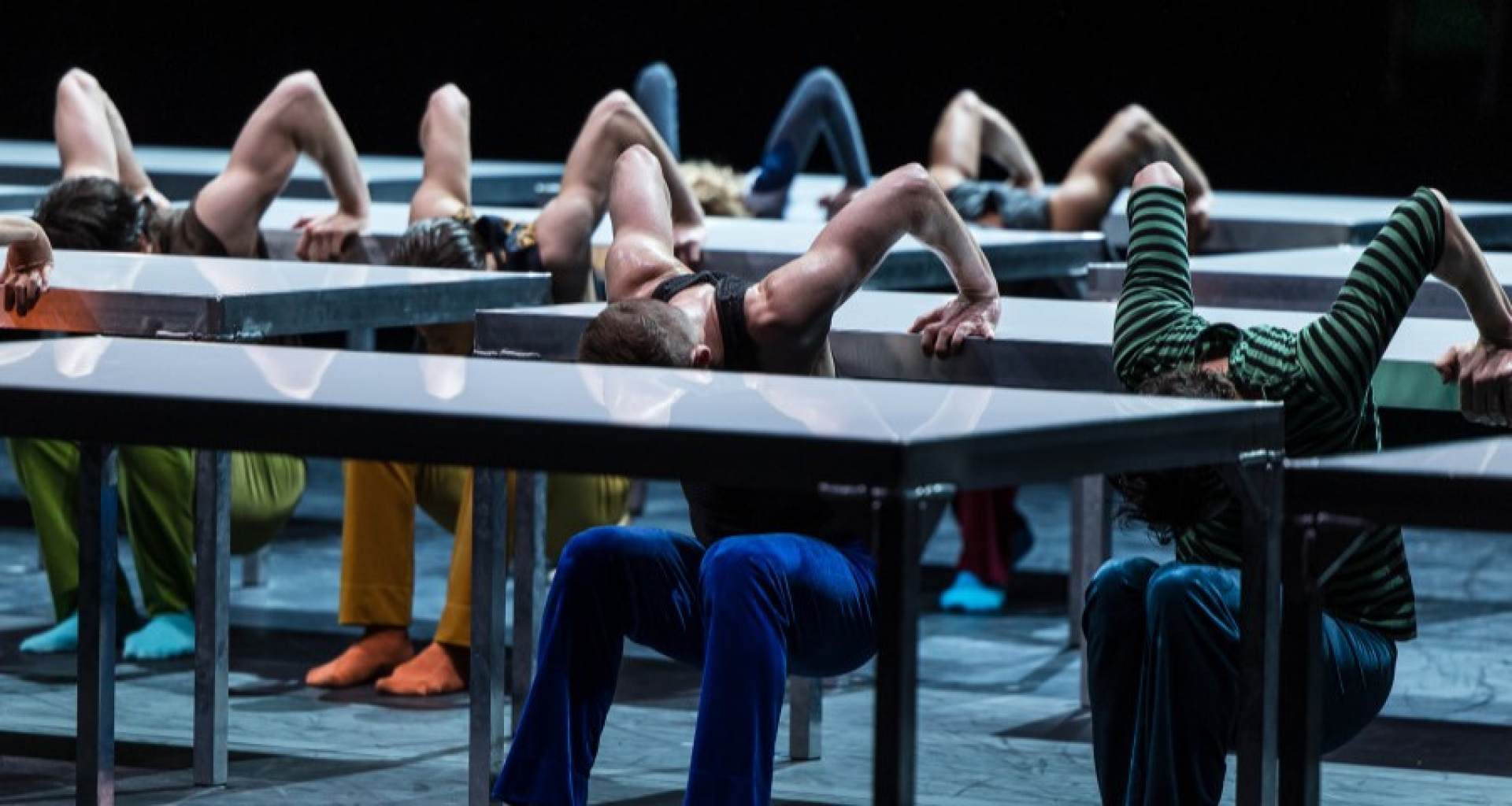William Forsythe
Mo | Tu | We | Th | Fr | Sa | Su |
Approximate Sonata 2016 / One Flat Thing, reproduced / Blake Works I
Choreographies by William Forsythe
Duration: 1 hour 40 minutes
Forsythe is a legendary choreographer, revered worldwide as one of the most creative innovators of the ballet tradition. Since the 1970s, he has revolutionised dance by intelligently developing academic ballet in a way that frees the human body from its predetermined corset and broadens choreographic expression in unprecedented ways. Many of William Forsythe’s virtuoso compositions have long become modern classics. In this homage, the Staatsballett will perform three groundbreaking pieces by the American choreographer.
Approximate Sonata 2016 is a series of pas de deux, offering the performers the opportunity to mutually craft finely differentiated nuances within a choreographic structure whose forms are frequently difficult to sustain. The performers have a balanced agency in determining the dynamic outcome of these forms, striving to accommodate the choices the other is making in order to advance each other’s intentions.
For all the hazardous torrent of dancers moving relentlessly around metal tables, One Flat Thing, reproduced (2000) is actually a purposeful chapter in ongoing research into the visual distribution of contrapuntal balletic structure. The work is set up as a linked ‹machinery› that is created through the interaction of three systems of organization: numerous individual movement themes, a dense system of distributed cueing and complex alignments of forms and/or movement flow. Although the dancer’s field of action is seriously delimited, the unyielding maze of tables also offers the unusual possibility of composing interrelated action on three levels.
Blake Works I, staged for the Paris Opera Ballet in 2016, was the first work created in the classical idiom after a hiatus from ballet of more than 17 years. The work deploys a distinctly historical approach to the genre, versus the analytical approach used in a majority of the previous ballet oriented works. Blake Works I radiates an affection for the language of ballet, and even revives several iconic fragments from works of the genre’s great practitioners that had been deeply influential during formative years. The work’s vocabulary is grounded in the French school and makes use of several of the demanding intricacies of that particular style.
William Forsythe himself will rehearse these three works with the dancers of the Staatsballett in Berlin.
Program and cast
Approximate Sonata 2016
Choreography: William Forsythe
Music: Thom Willems
Stage and lighting design: William Forsythe
Costumes: Stephen Galloway
Staged by Stefanie Arndt / Thierry Guiderdoni
Stage and lighting supervisor: Tanja Rühl
Sound supervisor: Niels Lanz
One Flat Thing, reproduced
Choreography: William Forsythe
Music: Thom Willems
performed live by: Niels Mudde
Stage and lighting design: William Forsythe
Costumes: Stephen Galloway
Staged by Thierry Guiderdoni / Ayman Harper
Stage and lighting supervisor: Tanja Rühl
Sound supervisor: Niels Mudde
Blake Works I
Choreography: William Forsythe
Music: James Blake
Set Design: William Forsythe
Lighting Design: Tanja Rühl
Costumes: Dorothee Merg / William Forsythe
Staged by Stefanie Arndt / Ayman Harper / Yannick Sempey
Stage and lighting supervisor: Tanja Rühl
Sound supervisor: Niels Lanz
Tänzer*innen des Staatsballetts Berlin
Deutsche Oper Berlin
The Deutsche Oper Berlin is an opera company located in the Charlottenburg district of Berlin, Germany. The resident building is the country's second largest opera house and also home to the Berlin State Ballet.
The company's history goes back to the Deutsches Opernhaus built by the then independent city of Charlottenburg—the "richest town of Prussia"—according to plans designed by Heinrich Seeling from 1911. It opened on November 7, 1912 with a performance of Beethoven's Fidelio, conducted by Ignatz Waghalter. After the incorporation of Charlottenburg by the 1920 Greater Berlin Act, the name of the resident building was changed to Städtische Oper (Municipal Opera) in 1925.
Deutsches Opernhaus, 1912
With the Nazi Machtergreifung in 1933, the opera was under control of the Reich Ministry of Public Enlightenment and Propaganda. Minister Joseph Goebbels had the name changed back to Deutsches Opernhaus, competing with the Berlin State Opera in Mitte controlled by his rival, the Prussian minister-president Hermann Göring. In 1935, the building was remodeled by Paul Baumgarten and the seating reduced from 2300 to 2098. Carl Ebert, the pre-World War II general manager, chose to emigrate from Germany rather than endorse the Nazi view of music, and went on to co-found the Glyndebourne opera festival in England. He was replaced by Max von Schillings, who acceded to enact works of "unalloyed German character". Several artists, like the conductor Fritz Stiedry or the singer Alexander Kipnis followed Ebert into emigration. The opera house was destroyed by a RAF air raid on 23 November 1943. Performances continued at the Admiralspalast in Mitte until 1945. Ebert returned as general manager after the war.
After the war, the company in what was now West Berlin used the nearby building of the Theater des Westens until the opera house was rebuilt. The sober design by Fritz Bornemann was completed on 24 September 1961. The opening production was Mozart's Don Giovanni. The new building opened with the current name.

 EN
EN DE
DE IT
IT FR
FR ES
ES RU
RU JP
JP RO
RO
 Seating plan
Seating plan 